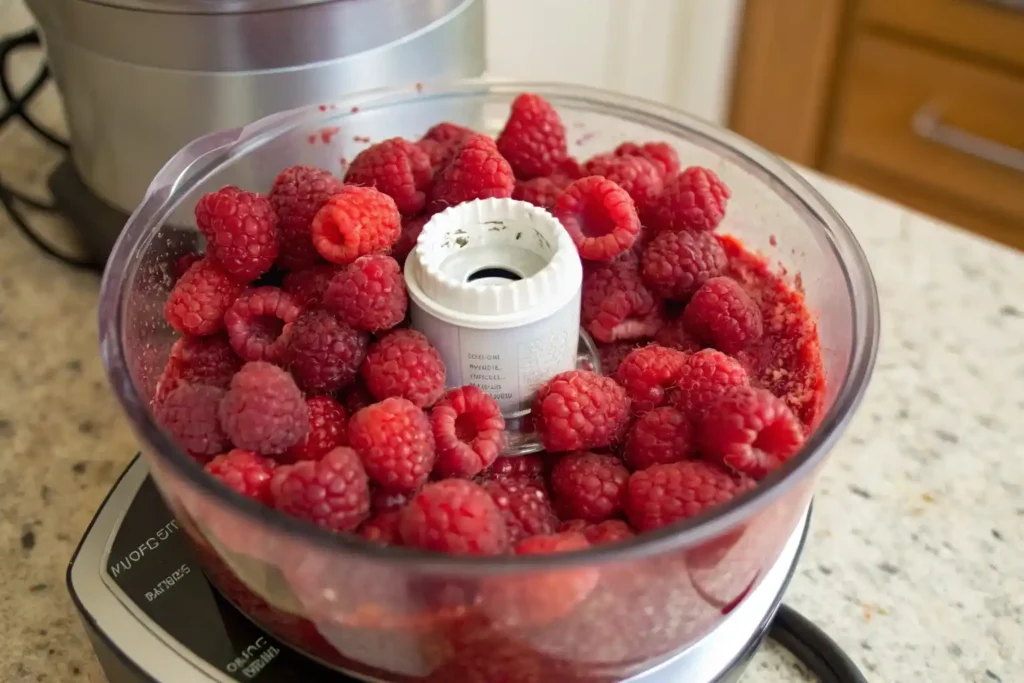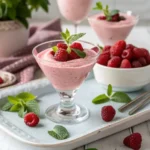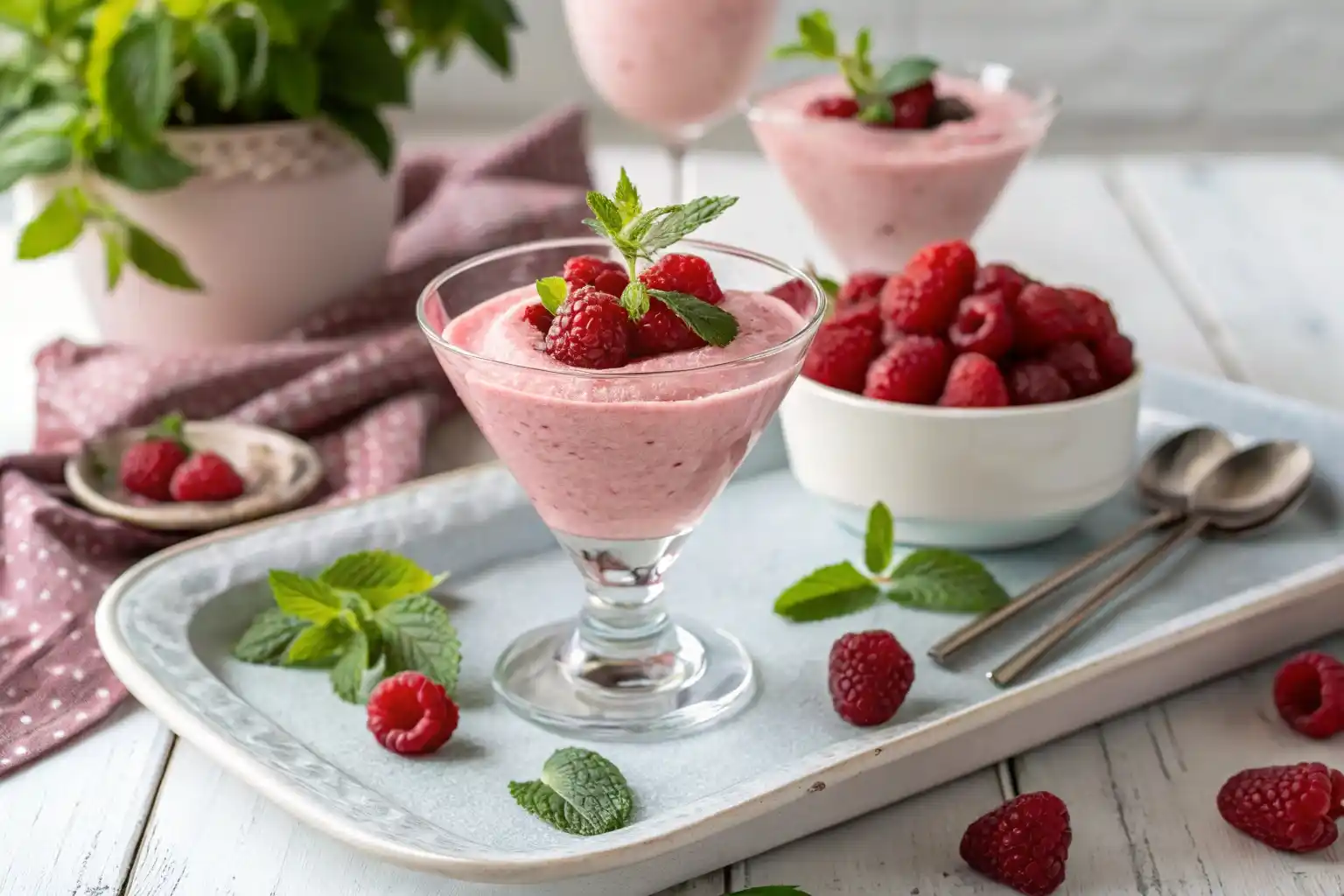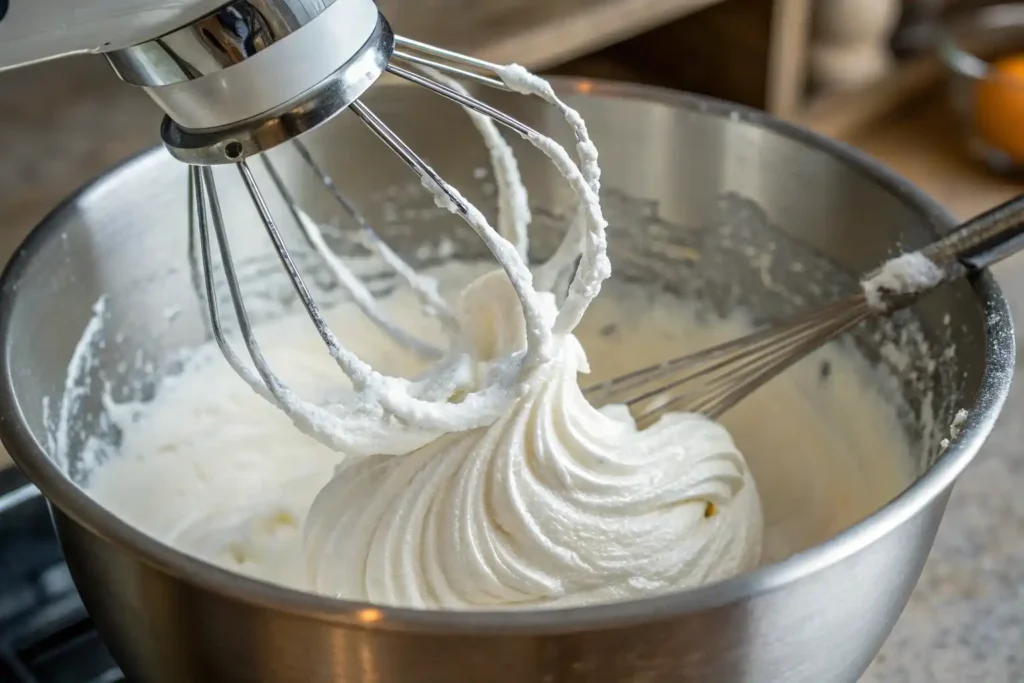Plant-Based Indulgence Without Compromise
The world of vegan desserts has evolved dramatically, offering plant-based alternatives that rival their traditional counterparts in both taste and texture. One such marvel is vegan raspberry spuma, a light, airy dessert that captures all the refreshing qualities of the classic raspberry spuma recipe while being completely egg-free. The secret ingredient? Aquafaba—the liquid from canned chickpeas that whips up into a surprisingly effective meringue substitute. This comprehensive guide will walk you through creating a stunning vegan raspberry spuma that’s perfect for summer entertaining or simply satisfying your sweet tooth guilt-free.
What is Aquafaba and Why Does It Work?
Aquafaba, literally meaning “bean water” in Latin, is the viscous liquid found in canned legumes, particularly chickpeas. This seemingly ordinary liquid has revolutionized vegan baking and dessert-making due to its remarkable ability to mimic the properties of egg whites. When whipped, aquafaba creates foam and holds air, much like egg whites do, making it an ideal substitute for creating light, airy textures in desserts.
The science behind aquafaba’s effectiveness lies in its protein and starch content. These components, along with natural emulsifiers present in the liquid, allow it to trap air bubbles when whipped, creating stable foam. The result is a meringue-like consistency that can be used in everything from mousses to macarons.
For those concerned about raw egg safety in traditional spuma recipes, aquafaba offers a worry-free alternative that eliminates any food safety concerns while delivering exceptional results. Understanding the differences between spuma, mousse, and espuma can help you appreciate why this vegan version maintains all the characteristics that make spuma such a beloved dessert.
Choosing the Right Aquafaba
Not all aquafaba is created equal. For the best results in your vegan raspberry spuma, consider these tips:
Quality Matters
Use unsalted chickpeas: Choose canned chickpeas that are unsalted or low-sodium to avoid an overly salty taste in your dessert.
Check the consistency: The liquid should be slightly thick and viscous, not watery. If it seems too thin, you can reduce it by simmering it gently until it thickens.
Fresh is best: Use aquafaba from a freshly opened can for optimal whipping properties.
Preparation Tips
Chill everything: Cold aquafaba whips better than room temperature. Chill your bowl and beaters as well for maximum volume.
Strain if necessary: If your aquafaba has any particles or foam from the can, strain it through a fine-mesh sieve before use.
The Perfect Vegan Raspberry Spuma Recipe
Ingredients
- 1/2 cup aquafaba (liquid from one 15-oz can of chickpeas)
- 1/4 cup granulated sugar
- 1 tablespoon lemon juice (optional, for stability)
- 2 cups fresh raspberries (or frozen, thawed and drained)
- 2 tablespoons powdered sugar (for the raspberry puree)
- Fresh raspberries and mint for garnish
Instructions
Step 1: Prepare the Raspberry Puree
Begin by creating a smooth raspberry puree. Place the raspberries in a food processor or blender with the powdered sugar and blend until completely smooth. For an ultra-smooth texture, pass the puree through a fine-mesh sieve to remove seeds. Set aside to cool if using fresh raspberries, or ensure frozen raspberries are completely thawed and drained.
Step 2: Whip the Aquafaba
In a large, clean bowl (preferably chilled), pour the cold aquafaba. Using an electric mixer, begin whipping on medium speed. The aquafaba will start to foam after a few minutes. Continue whipping, gradually increasing to high speed. This process takes longer than whipping egg whites—typically 10-15 minutes—so be patient.
Step 3: Add Sugar and Stabilizer
Once the aquafaba begins to hold soft peaks (around 8-10 minutes), gradually add the granulated sugar, one tablespoon at a time, while continuing to whip. If using lemon juice for added stability, add it now. Continue whipping until stiff, glossy peaks form. The mixture should hold its shape when the beaters are lifted.
Step 4: Fold in the Raspberry Puree

Using a large spoon or rubber spatula, gently fold the raspberry puree into the whipped aquafaba. Start by adding about one-third of the puree and folding it in with gentle, sweeping motions from the bottom of the bowl up and over the mixture. Repeat with the remaining puree in two more additions. Be careful not to overmix, as this can deflate the foam.
Step 5: Serve or Chill
The vegan raspberry spuma can be served immediately for a light, mousse-like texture, or chilled in the refrigerator for 1-2 hours for a firmer consistency. Divide among serving glasses and garnish with fresh raspberries and mint leaves.
Pro Tips for Perfect Vegan Raspberry Spuma
Achieving Maximum Volume
- Clean equipment is crucial: Any trace of oil or fat can prevent aquafaba from whipping properly. Ensure all bowls, beaters, and utensils are completely clean and dry.
- Be patient: Aquafaba takes significantly longer to whip than egg whites. Don’t give up if it seems like nothing is happening in the first few minutes.
- Add cream of tartar: A pinch of cream of tartar can help stabilize the foam and achieve better volume.
Flavor Variations
While raspberry is classic, this recipe works beautifully with other berries from our summer berries guide:
- Strawberry spuma: Substitute strawberries for raspberries, adding a touch of vanilla extract
- Mixed berry spuma: Combine raspberries, blueberries, and blackberries for a complex flavor profile
- Tropical twist: Try mango or passion fruit puree for an exotic variation
This vegan approach has become one of the most popular viral food trends, offering a plant-based take on classic Italian desserts that fits perfectly into healthy summer desserts collections.
Storage and Make-Ahead Tips
- Immediate consumption: Vegan spuma is best enjoyed fresh, as aquafaba foam can lose stability over time
- Refrigeration: Can be stored in the refrigerator for up to 24 hours, though some deflation is normal
- Freezing: For a frozen treat, transfer to freezer-safe containers and freeze for 2-3 hours. The texture will be similar to sorbet
For those who prefer a more traditional approach with cooked elements, you might also enjoy our cooked syrup spuma method, or transform this recipe into a frozen delight with techniques from our raspberry spuma ice cream guide.
Troubleshooting Common Issues
Aquafaba Won’t Whip
- Check your aquafaba: Ensure it’s thick enough and from unsalted chickpeas
- Clean equipment: Re-wash all equipment to remove any traces of fat
- Try reducing: Simmer the aquafaba gently to concentrate it before cooling and whipping
Spuma Deflates Quickly
- Fold gently: Overmixing can break down the foam structure
- Serve promptly: Aquafaba foam is less stable than egg whites, so serve soon after preparation
- Add stabilizers: Cream of tartar or lemon juice can help maintain structure
Too Sweet or Not Sweet Enough
- Adjust gradually: Taste the raspberry puree before folding it in and adjust sweetness as needed
- Balance with acid: A touch of lemon juice can brighten flavors and balance sweetness
If you’re new to vegan desserts, you might notice slight textural differences compared to the traditional raspberry spuma recipe. While aquafaba creates excellent foam, it may not hold quite as long as egg whites. This is completely normal and doesn’t affect the delicious taste or overall enjoyment of the dessert.
The Environmental and Health Benefits
Choosing vegan raspberry spuma offers several advantages beyond accommodating dietary restrictions:
Environmental Impact
- Lower carbon footprint: Plant-based ingredients generally have a smaller environmental impact than animal products
- Reduced waste: Using aquafaba gives purpose to liquid that might otherwise be discarded
Health Considerations
- Cholesterol-free: Unlike egg-based versions, vegan spuma contains no cholesterol
- Lower calories: Aquafaba is naturally lower in calories than eggs
- Allergen-friendly: Suitable for those with egg allergies or following vegan diets
Conclusion: A Delightful Plant-Based Treat
Vegan raspberry spuma proves that plant-based desserts can be every bit as satisfying and elegant as their traditional counterparts. With aquafaba as your secret weapon, you can create a light, airy, and utterly delicious dessert that will impress vegans and non-vegans alike. The key is patience during the whipping process and gentle handling when folding in the fruit puree. Whether you’re hosting a summer dinner party, looking for a refreshing treat on a hot day, or simply wanting to explore the wonderful world of vegan desserts, this raspberry spuma is sure to become a favorite in your recipe collection. For those interested in exploring the full range of spuma variations, don’t miss our comprehensive raspberry spuma recipe guide that covers both traditional and innovative approaches to this beloved Italian dessert.
Print
Vegan Raspberry Spuma
A light, airy vegan dessert made with aquafaba that captures the refreshing qualities of classic raspberry spuma, perfect for summer entertaining.
- Total Time: 30 minutes
- Yield: 4 servings 1x
Ingredients
- 1/2 cup aquafaba (liquid from one 15-oz can of chickpeas)
- 1/4 cup granulated sugar
- 1 tablespoon lemon juice (optional, for stability)
- 2 cups fresh raspberries (or frozen, thawed and drained)
- 2 tablespoons powdered sugar (for the raspberry puree)
- Fresh raspberries and mint for garnish
Instructions
- Prepare the Raspberry Puree: Blend raspberries with powdered sugar until smooth. Strain if desired and set aside.
- Whip the Aquafaba: In a chilled bowl, whip the aquafaba on medium speed until foamy. Increase to high speed and whip for 10-15 minutes until soft peaks form.
- Add Sugar and Stabilizer: Gradually add granulated sugar, then lemon juice if using, continuing to whip until stiff, glossy peaks form.
- Fold in the Raspberry Puree: Gently fold the raspberry puree into the whipped aquafaba without deflating it.
- Serve or Chill: Serve immediately for a light texture or chill for 1-2 hours for a firmer consistency. Garnish with fresh raspberries and mint leaves.
Notes
Ensure all equipment is clean before whipping aquafaba. Aquafaba takes longer to whip than egg whites, so be patient.
- Prep Time: 15 minutes
- Cook Time: 15 minutes
- Category: Dessert
- Method: Whipping
- Cuisine: Italian
- Diet: Vegan
Nutrition
- Serving Size: 1 serving
- Calories: 120
- Sugar: 15g
- Sodium: 10mg
- Fat: 0g
- Saturated Fat: 0g
- Unsaturated Fat: 0g
- Trans Fat: 0g
- Carbohydrates: 28g
- Fiber: 3g
- Protein: 2g
- Cholesterol: 0mg
Keywords: vegan dessert, raspberry spuma, aquafaba, healthy dessert, summer treat


